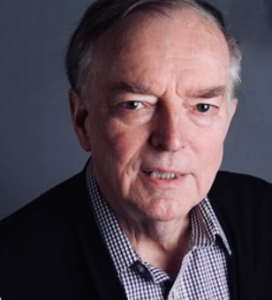#156– July 18, 2022

https://www.youtube.com/watch?v=uuagDiXipg8
Concerto for Piano, Winds and Percussion by Spanish-American composer and conductor Leonardo Balada is our Composition of the Week.
Written in 1974, this is Balada’s second concerto for solo piano. The first one was written in 1964 for solo piano and symphony orchestra.
The concerto has a duration of 16 minutes, and it is available at Schirmer.
It is scored for orchestral winds and percussion (3333/4431.Perc (4)).
This work was first performed on April 15, 1974, at Carnegie Hall in New York by Harry Franklin, pianist, and the Carnegie Mellon Symphonic Wind Ensemble, Richard Strange, conductor. It is dedicated to those artists.
“This concerto was commissioned by the Carnegie Mellon University Alumni Association. The soloist in almost perpetual motion, and the two forces—the soloist and winds—are more often than not at odds.
The work is in one movement, but there are three sections. The first starts with a “ping-pong” idea taken in a literal sense. The single figure gradually expands into a broken cluster-like texture, aided by similar material in the winds and trumpets, which determines the rich ending of the first section. The disintegration of the climax leads to the middle section, slow and open in an almost “Chopinesque” Romanticism of free rubatos and dynamics. This is a homage to the 19th century in the same fashion that the first part is a homage to the 20th century of Poulenc and Stravinsky. A melodic idea of four notes presented out of phase leads to the third section with a sudden and staccato hammering by the soloist.
The element of repetition is of utmost importance in the work, as is the contrast between the unison and the clusters, intermingled with triadic sounds and other devices that I like to call “recycling” of traditional techniques.” (Program notes from the Naxos Recording)
Balada’s music features extensive rhythmic variance and unique orchestration, often in service of a haunting atmosphere.
Balada was born in Barcelona, Spain. After studying piano at the “Conservatori Superior de Música del Liceu” in Barcelona, Balada emigrated to the United States in 1956 to study at the New York College of Music on scholarship. He left that institution for the Juilliard School in New York, from which he graduated in 1960. He studied composition with Vincent Persichetti, Alexandre Tansman and Aaron Copland, and conducting with Igor Markevitch.
In 1981, he became a naturalized citizen of the United States.
He taught at Carnegie Mellon University in Pittsburgh, Pennsylvania starting in 1970, and retired in 2020.
Balada’s works from the early 1960s display some of the characteristics of neoclassicism, but he was ultimately dissatisfied with this technique, and in 1966 began to move towards a more avant-garde style, producing works such as Guernica.
Balada felt a need for a change again in 1975, his work from then onward being characterized by the combination of folk-dance rhythms with the avant-garde techniques of the previous period. Harmonically, Balada’s mature period work displays a combination of the tonality of folk music with atonality. Compositions representative of this period include Homage to Sarasate and Homage to Casals.
Balada’s works for winds have been recorded by Naxos Records.
Other works for winds include:
- Cello Concerto No. 1 for nine players (1962)
- Symphony No. 2 “Cumbres” (1972)
- Viola Concerto (2009 – 2010)


